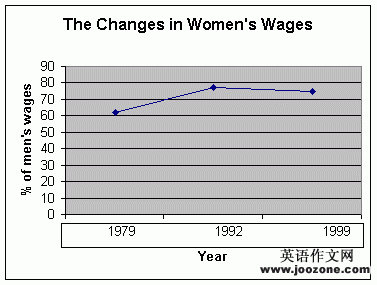先且教您一句:
equal pay for equal work 同工同酬 最准确的翻译
Claims of gender equality are laced with contradictions . The principal fallacy centers on the workplace and concept of equal pay for equal work . Another , but no less important , aspect revolves around the entry of women into top management positions .
性别平等的呼声中有少量自相矛盾的内容。最大的谬误在于工作场所和同工同酬的概念。另一个同样重要的方面与女性进入最高管理职位紧密相关。
Equal pay for equal work!
I have worked at JiNing NO.2 Coal Mine for one year up to now. It is so surprise for me that don't equal pay for equal work! I do well my works hardly every day, but finally what I have got is so rarely. When I watch my bankbook at a time, I feel sad. As my wages are low, I don't have eoungh money to do my interested things. The thing is when giving away the work prizes every time, the leaderships receive far more money than us who do manual work. Why? It's not equal!
How can we bridge the gap between rich and poor? The answer is equal pay for equal work!
Equal Pay for Equal Work:
Wage Discrimination against Women
Andrea Schroeder
The Women’s Equal Rights Movement has made dramatic progress in the last one hundred years. As a result, a woman can now vote, choose almost any career, and defend her human right to happiness. But, in spite of the progress made in the area of equal rights, wage problems in the workplace still exist which deny women equal pay for equal work.

美国女性收入变化
SUCCESSES
Women are closing the gender gap in workplace and higher education. They are starting to climb the corporate ladder and are moving into managerial positions. Forty-three percent of managers are women today as opposed to the nineteen percent who were managers in 1970 ("Almost, But Not Quite, Equal" 1). Women are also receiving a higher level of education. They earned forty-five percent of the law degrees in 1994 compared to eight percent in 1972. Education is an important contributing factor to the progress being made in reducing the discrepancy in wages between genders. With women becoming better educated than 20 years ago, potential for a higher salary is greater. Today, women earn fifty percent of all college degrees and forty percent of all medical degrees. It is, perhaps, because of education that women’s wages grew, on average, twenty percent faster than men’s from 1920-1980 (Clark 174). The situation is not that fewer men have been attending college, but that a greater number of women are able, encouraged and willing to take the next step in education than ever before.
PROBLEMS
Despite all that has been accomplished, wage equality between men and women has not yet been reached. Overall, women only earn 74% of what men do in America (Equal Pay). In the higher job positions, with higher wages, there is a lack of female presence. An example of this situation is in the American school districts. Even though many elementary school teachers are women, only 5% of school superintendents are women (Hankin 114). Also, despite the growing number of women managers, only 5% are senior managers in the top 2,000 companies (Clark 173). Joseph N. Hankin is the President of Westchester Community College, which is a college committed to training working women to re-enter the workforce in new careers or in their own business. He comments that "on a scale of 1 to 10, we [society] are a three" (114). There is a concern that the percent of women’s wages to men’s wages is falling again. Women’s median weekly wages are shown from 1979, 1992, and 1999 in the figure 1.1 below.
Figure 1.1
Source: Data taken from Koretz, www.liuxuepaper.com
LAWS
The American Government has considered only limited laws concerning equal pay for equal work. The Equal Opportunity Act of 1996 has a section, 4c, which could be interpreted in such a way as to deny jobs to women instead of giving equal opportunity to them. At a glance, this bill seems beneficial. When Charles Canady, a representative from Florida, was asked what he thought of this bill, he replied, "It embraces the principle of nondiscrimination." He also stated, "This bill would prohibit granting anyone special preference on the basis of race or gender" (qtd. in "Equal Opportunity?" 92). However, the wording in this bill could be twisted to hurt women instead of help women. The first section states, "Sex is a bona fide occupational qualification reasonably necessary to the normal operation of the entity subject to the classification" (Equal…" 92). Nancy Zirkin, director of government relations for American Association of University Women, comments that "This loose wording creates a dangerous loophole that could entitle an employer to claim, for whatever reason he might give, that gender is a requirement of the job" (qtd. in "Equal…" 92). The second section declares, "The classification is designed to protect the privacy of individuals." Kathy Rodgers, executive director of the National Organization for Women Legal Defense and Education fund, says that employers that have no female locker rooms or restrooms, or that have an all male environment could argue that hiring a woman would invade a man’s privacy ("Equal…" 92).liuxuepaper.com